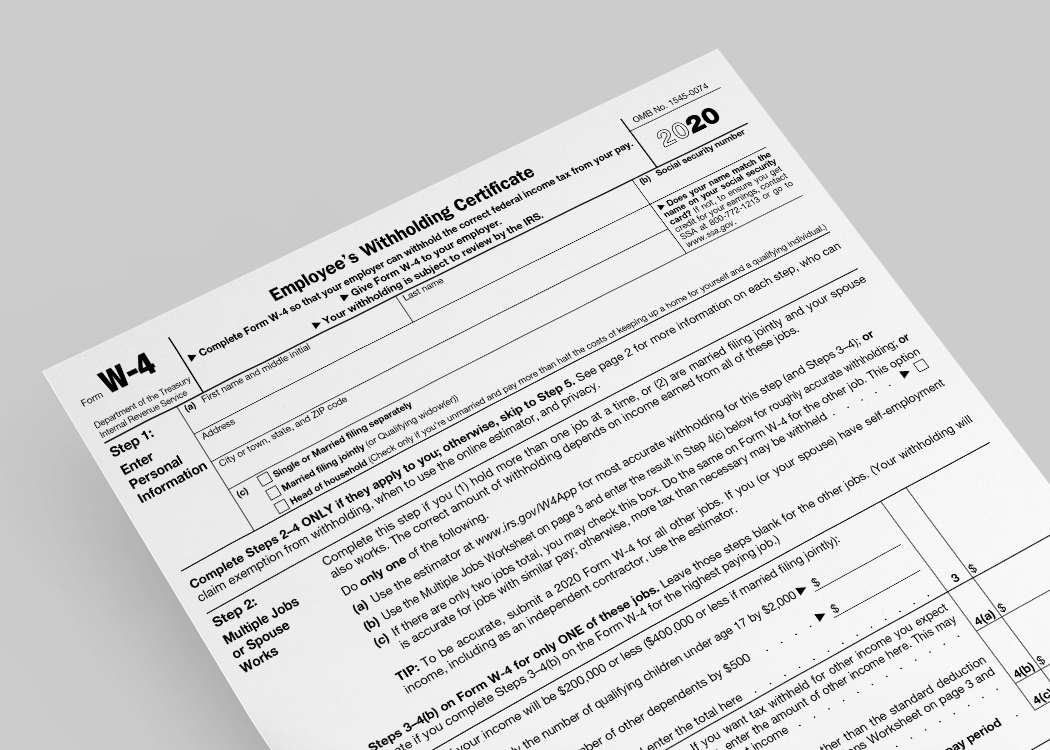4 min read
5 Ways to Simplify the Onboarding Process
Managing an active HR office is demanding work on a typical day. When a new employee arrives for orientation, an already-hectic day gets a bit...
Expert payroll management services with a personal touch.
View Solution Read Guide HR Support
HR SupportSimplify and personalize HR with a team of HR experts on-demand.
View Solution Read Guide Time & Attendance
Time & AttendanceWhy spend more unnecessary time and money managing your workforce?
View Solution Read Guide Hiring & Onboarding
Hiring & OnboardingTurn your candidates into employees with hiring & onboarding solutions.
View Solution Read GuideAdd On Solutions automate everyday tasks, prevent mistakes, and simplify business compliance.
View SolutionHelpful downloads and eBooks to empower your business.
Helpful tax and HR alerts to help keep your business compliant.
Payroll and tax-related forms and documents.
Horizon's blog provides valuable insight into payroll, compliance, human resources, and more.
See our client success stories for a case study on how we can help your business.
Payroll and HR strategy requires intelligent technology, personal attention and specialized expertise in the needs and nuances of your business.
We provide payroll and tax processing services for businesses from 1 to 1,000 employees or more. Today, we have nearly 1,000 customers in 40 states.
4 min read
![]() Brad Johnson
:
August 7, 2019 at 3:47 PM
Brad Johnson
:
August 7, 2019 at 3:47 PM
Every new employee wants to make a strong impression on their first day. The HR team plays a key role in setting each new worker on the right track so they can succeed. At the same time, hiring managers rarely have the time to organize an official onboarding process. Doing so, however, could save significant time, energy and transition complications. It welcomes the new team member with a sense of efficiency and enthusiasm that would otherwise get lost without a plan.
 Different from the training process, an onboarding plan covers all the policy information, paperwork requirements and details for succeeding as an employee of the whole company. It creates a foundation for understanding the timekeeping procedures, completing all payroll and policy forms and feeling comfortable in how the office of business runs. Many modern companies benefit from the help of digital onboarding software as well.
Different from the training process, an onboarding plan covers all the policy information, paperwork requirements and details for succeeding as an employee of the whole company. It creates a foundation for understanding the timekeeping procedures, completing all payroll and policy forms and feeling comfortable in how the office of business runs. Many modern companies benefit from the help of digital onboarding software as well.
Both the company and the new-hire benefit from an organized onboarding process. For example, an onboarding plan:
In an ever-expanding or changing company, a standard onboarding process simplifies the training process when new members start frequently and on a rolling basis.
As we touched on above, both sides benefit from an organized process. These benefits go beyond getting through everything on time. Additional benefits include:
1. Compliance
With minimal time to onboard and train an employee, a proper plan ensures that you haven’t missed any forms or necessary policy information. This prevents compliance issues in the first few months of the employee’s experience.
A team-based onboarding plan means that there’s a decreased chance of missing any important details or making paperwork errors. Even if the whole onboarding process falls to one person, a preset process cuts down on preparation efforts each time an employee begins.
2. Orientation
Starting with basic paperwork and information can take the pressure off the new recruit. All they have to do is listen and answer with their basic data. This allows them time to ease into the office space and mentally prepare for more complex training. You equally have time to start a conversation with the employee and set yourself up to be a resource and point of contact going forward. As the first face they see when they arrive, you have a chance to pass on the tone of the office.
3. Trust
Demonstrate your confident level of organization from the very moment they begin their tenure with the company. By setting this standard, the employee is more likely to uphold the same level of care and specificity spent on a system that takes care of its community of employees.
4. Efficiency
Perhaps most importantly, the employee can get on with the job they came here to do. With a clear system of onboarding, you can be at the ready to streamline them through their orientation so they’re ready to solely focus on training.
A member of human resources is often the first point of contact for an employee on their first day. It’s easy to feel inundated with information before their official training even begins. So how can you simplify the initial interaction to put the employee at ease?
The first day of onboarding may include the following:
This is a lot of information for the new recruit take in. Having a set process for each employee allows you to customize their first day based on a pre-determined method that is tried and true. This means that both you and the new employee feel at ease during this initial setup phase.
Consider all the ways you can relay this information to the new employee. Tactics may include stand-and-deliver lecturing, PowerPoint presentations, allowing the employee to read on their own or through online onboarding software.
Each method has its own benefits. Presentations allow the new employee to sit back and simply take in the information, relieving the pressure of the first-day jitters. Reading and filling out paperwork on their own gives them a chance to quietly process the information without someone standing over them. It also gives them a chance to take notes at their own speed. By varying your methods, you provide each type of personality the time to both relax and engage.
Alert your new employee of their first-day schedule before or as soon as they arrive on the first day. Get them started on setting up their login and basic information as soon as they arrive to give them a moment to get settled at their desk and begin the process of sign-in without the pressure of time. Breaking down the day into clear segments allows the employee to look ahead and prepare for the day.
Some companies prefer to combine the training and onboarding process to vary the topic of information. Coordinate with the new employee’s manager to transition between HR onboarding and role-specific topics. This way, if the employee needs a break from paperwork, they can switch gears and take in the dense information in easy-to-process portions.
Their managers may also want to welcome them with an off-site lunch or breakfast, so it’s important to work your schedule around the intentions of their team.
Horizon Payroll Solutions offers customizable onboarding software that allows you to tailor your paperwork needs to each employee. Cut down on paper itself while decreasing the time it takes to hand-transfer information into a database yourself. Our system automatically creates an employee profile and stores information for safekeeping.
With little time to spare, taking the time to arrange a set onboarding process could get pushed aside. As soon as you have a customary method of welcoming a new member of your team, the more time saved in the future. Set the tone during an employee’s orientation with organization, efficiency and confidence.

4 min read
Managing an active HR office is demanding work on a typical day. When a new employee arrives for orientation, an already-hectic day gets a bit...

4 min read
By now, you’ve probably heard the IRS has released a redesigned version of form W-4 for 2020, also known as the Employee’s Withholding Certificate....

5 min read
Most of us can remember being the new person on the job. Even if you’re excited for a change, it can be a little scary when you don’t quite know what...